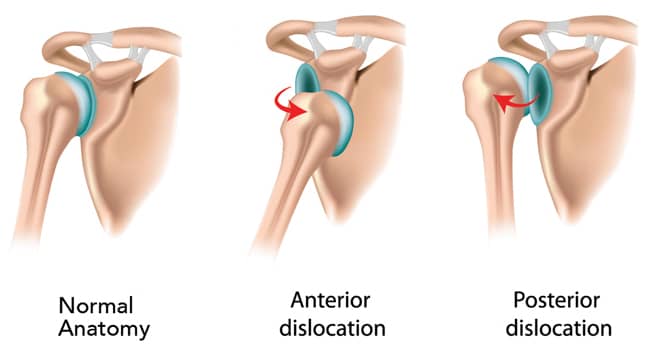How to Relocate a Shoulder

If you have a shoulder that is tense, tight, or painful, then you are probably wondering how to relocate it so that it can be used again. This is a good question because there are actually a lot of different ways to move your shoulder. In this article, we are going to cover some of the options you can take. Once you know what you need to do, you can use them to relocate your shoulder and get back to pain-free activities again.
Step 1
Shoulder dislocations are a common shoulder injury. They are commonly caused by falls that result in a sudden shock to the upper arm and shoulder. This can cause tears and damage to the tendons and ligaments surrounding the joint. It can also cause pain, weakness, and numbness in the arm.
To prevent a dislocation from occurring, you should be sure to wear protective gear. This includes a sling. Wearing a sling keeps your shoulder in place, prevents further injuries, and can reduce your pain. If you’re experiencing shoulder pain, you should seek medical attention right away.
When you go to the emergency room, your provider will inspect the area. They may order an X-ray, a computerized-tomography scan, or a MRI. The X-ray will show you if your shoulder is in the proper position, and if there are any broken bones.
Your health care provider will also check for any nerve damage or signs of blood vessel damage. They may prescribe you muscle relaxants or numbing agents to help ease your discomfort.
Once your health provider has taken these steps, he or she can begin to create a treatment plan for you. This plan will include exercises to strengthen and stretch your shoulder muscles, as well as exercises to improve your range of motion.
Depending on the extent of your damage, you may be advised to undergo surgery to repair the shoulder tissue. In most cases, this surgery is arthroscopic, which means that it is performed with a small incision in the shoulder. An arthroscope, a thin tube with a camera, is inserted through the incision to allow the surgeon to see the tissues in the joint.
Nonsurgical treatments are usually a combination of medication and physical therapy. These medicines can help relieve the pain, swelling, and inflammation in the shoulder. However, nonsteroidal anti-inflammatory drugs (NSAIDs) can increase your risk of heart attack and ulcers. So, if you think you have a serious injury, it is best to see your healthcare provider before taking any medications.
Pain is a major indicator that your shoulder has been dislocated. If you have severe pain, you may need a strong muscle relaxant or sedative.
You can help to move your shoulder back into the socket by alternating between gentle pushing and pulling. Make sure that you aren’t tugging on your arm or moving your arm in any way that will further damage the shoulder.
When you’re done, it’s important to rest your shoulder. Doing too much in the first few days can cause your joints to stiffen and make it more difficult to relocate your shoulder.
As your condition settles, you can resume normal activity. But you should refrain from any overhead activities for a few days. Relocating your shoulder may require a sling, which is a type of arm-rest designed to keep your arm in place.
Step 2
Relocating a shoulder is a complex process. It takes a lot of work to move the arm, and the results can be painful. If you are the victim of a sprain or dislocation, there are ways to reduce your pain and the chances of further damage to the joint.
The first step is to take a quick X-ray to identify the site of the injury. You should also check the pulse on the affected limb. A slower pulse indicates a more serious ailment, and should be treated as quickly as possible.
Shoulder dislocation is an odious ailment that can damage blood vessels, ligaments, and nerves. If you have suffered a shoulder injury, you need to take steps to repair it as soon as possible. Your health care provider may prescribe a sling, which will keep your arm firmly in place. In addition to slings, you can use the aid of a trained medical professional to put your shoulder back in place.
The medical community is a well-oiled machine, and you can expect to receive expert help as soon as you call in a referral. Even in the absence of immediate medical attention, it’s best to follow your doctor’s instructions to the letter.
While you are waiting for your surgeon to arrive, you should have a plan to relocate your shoulder. This may involve a combination of rest, ice, and OTC pain relievers. However, it may be necessary to seek the advice of a doctor to determine which methods are best for you. After a few days, you can begin a series of strengthening exercises, as well as a sling, which should be worn for a couple of weeks.
There is a silver lining to shoulder relocation: you will have less pain! While you won’t be able to do everything you did before your injury, you can make do. For example, you can apply a moist heat pack to the area to relax any sore muscles. When you have reached your wits’ end, you can ask your physician for a referral to a physical therapist. Alternatively, you can visit a chiropractor, who can show you some stretches and range of motion exercises.
The best way to relocate a shoulder is to get medical help. While you can try to do it on your own, it’s safer to let the pros do their job. And if you can’t find anyone to assist you, the least expensive option is to call emergency services. Some cities offer a local emergency service that will provide helpful advice.
Of course, it’s also possible to relocate your shoulder on your own. With a little practice, you’ll find it’s not as difficult as it seems.
Step 3
If you have injured your shoulder, there are several options for you to choose from. One option is to relocate your shoulder. Relocating your shoulder will allow you to regain your arm’s range of motion, and decrease your pain. However, relocation is only recommended in case of a true emergency.
First and foremost, you need to seek medical attention. Your health care provider can prescribe medicine to help you with your pain, and inspect the area to ensure there is no nerve damage. Also, ice may be applied to your shoulder to ease the swelling and reduce the inflammation.
In addition, you may want to have a sling put on your shoulder, to keep it from moving around too much and further causing further injury. Although you can make one yourself, it is best to get professional help.
You will also need to rest your arm and take a few OTC pain medications. A sling can last from a few days to a few weeks, depending on the severity of your injury. For instance, if you were tripped while standing up, you would want to get medical help as soon as possible.
The next step is to locate a physical therapist who can help. They can use a variety of tests to check for your condition and perform a number of exercises to help you move your arm again. This can be done in an office or at home, and is the only way you will get a proper evaluation.
The X-ray or MRI is a good idea, as these can reveal signs of bone damage and soft tissue problems. An arthrogram can be especially helpful as these provide a detailed look at the soft tissues in the shoulder.
Finally, the aforementioned sling should be worn for at least twelve hours. This should be a minimum, as the longer the sling is worn, the more likely you are to have your shoulder revert to its original position.
In some cases, a doctor may even sedate you with a numbing agent, to lessen the pain of relocating your shoulder. While this may not be the wisest choice, it is not inconceivable. It is important to be cautious with medication, especially if you have diabetes or heart disease.
Regardless of the method you choose to relocate your shoulder, the most important thing is to heed all instructions and warnings. Shoulder relocation can be dangerous, and it is a good idea to take all the steps you can to avoid further injury. Ultimately, your health is worth it.
With a little luck and some good planning, you can avoid the risk of shoulder dislocation. However, if you have suffered a serious injury to your shoulder, it is important to call emergency services.




